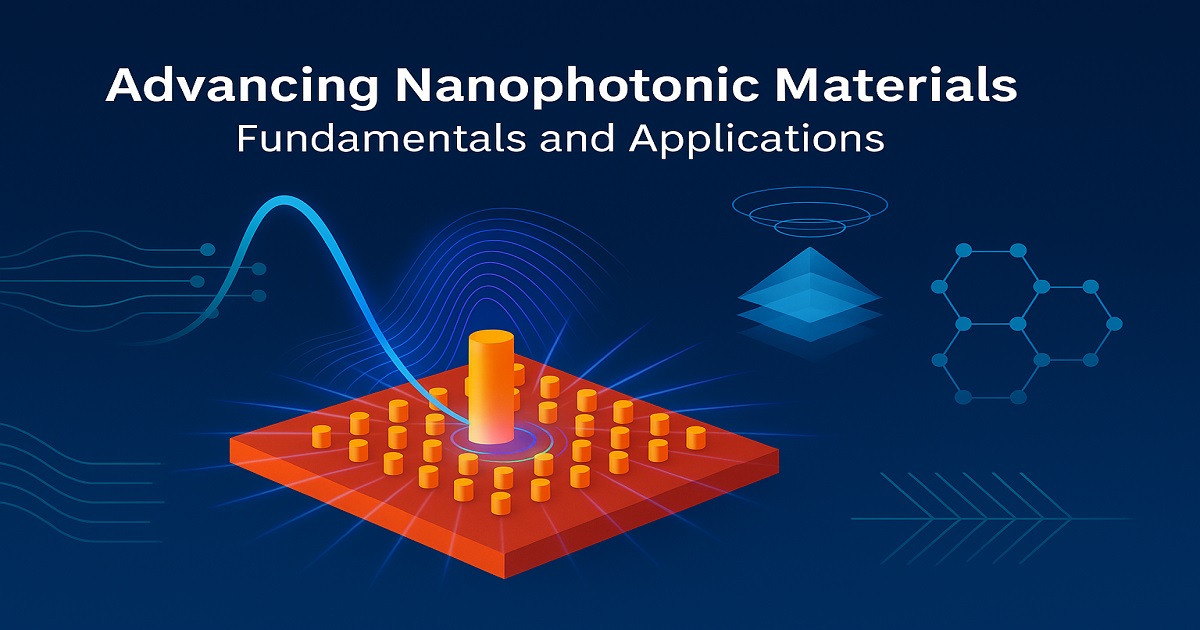Advancing Nanophotonic Materials: Fundamentals and Applications
A special issue of Materials (ISSN 1996-1944). This special issue belongs to the section "Optical and Photonic Materials".
Deadline for manuscript submissions: 20 January 2026 | Viewed by 718

Special Issue Editors
Interests: semiconductor lighting; optical sensors; plant factories; plant photometry; photoelectric conversion; photosynthesis; photovoltaic technology
Interests: sensors; instrumentation; photonics; plasmonics; fiber optic sensors; surface plasmon resonance (SPR); terahertz sensing; optoelectronics; manophotonics; biophotonics; metamaterials; biosensors; refractive index sensing; 2D materials (Graphene, MXene); machine learning in sensor design
Special Issue Information
Dear Colleagues,
We are pleased to invite you to contribute to our Special Issue entitled “Advancing Nanophotonic Materials: Fundamentals and Applications”. As a rapidly evolving interdisciplinary field, nanophotonics has garnered significant attention due to its potential to revolutionize various technological domains. This area of research area is crucial as it promises to deliver novel solutions to the key challenges associated with energy, healthcare, and information technology.
This Special Issue aims to curate a comprehensive collection of articles that not only contribute to our fundamental understanding of nanophotonic materials but also showcase their diverse applications. In alignment with the scope of the journal, which encompasses the broader field of materials science and engineering, we hope to create a Special Issue that is both scientifically rich and technologically relevant. We aim to compile at least 10 high-quality articles, potentially leading to the publication of this Special Issue in book form.
We welcome original research articles and reviews that delve into various aspects of nanophotonic materials. The scope of this Special Issue includes, but is not limited to, the following topics:
- The synthesis and characterization of novel nanophotonic materials;
- The theoretical and computational modelling of nanophotonic phenomena;
- Applications in renewable energy, such as advanced solar cells;
- The development of nanophotonic sensors and imaging techniques;
- Innovations in communication technologies using nanophotonic devices;
- Metamaterials and their unique optical properties.
We look forward to receiving your contributions and believe that together we can create a Special Issue that will serve as a valuable resource for the scientific community.
Dr. Xinyu Zhang
Guest Editor
Dr. Jacob Wekalao
Guest Editor Assistant
Manuscript Submission Information
Manuscripts should be submitted online at www.mdpi.com by registering and logging in to this website. Once you are registered, click here to go to the submission form. Manuscripts can be submitted until the deadline. All submissions that pass pre-check are peer-reviewed. Accepted papers will be published continuously in the journal (as soon as accepted) and will be listed together on the special issue website. Research articles, review articles as well as short communications are invited. For planned papers, a title and short abstract (about 250 words) can be sent to the Editorial Office for assessment.
Submitted manuscripts should not have been published previously, nor be under consideration for publication elsewhere (except conference proceedings papers). All manuscripts are thoroughly refereed through a single-blind peer-review process. A guide for authors and other relevant information for submission of manuscripts is available on the Instructions for Authors page. Materials is an international peer-reviewed open access semimonthly journal published by MDPI.
Please visit the Instructions for Authors page before submitting a manuscript. The Article Processing Charge (APC) for publication in this open access journal is 2600 CHF (Swiss Francs). Submitted papers should be well formatted and use good English. Authors may use MDPI's English editing service prior to publication or during author revisions.
Keywords
- nanophotonics
- biosensors
- plasmonics
- 2D materials
- terahertz sensing
- optical metasurfaces
- surface plasmon resonance
- graphene sensors
- liquid biopsy
- machine learning in optics
Benefits of Publishing in a Special Issue
- Ease of navigation: Grouping papers by topic helps scholars navigate broad scope journals more efficiently.
- Greater discoverability: Special Issues support the reach and impact of scientific research. Articles in Special Issues are more discoverable and cited more frequently.
- Expansion of research network: Special Issues facilitate connections among authors, fostering scientific collaborations.
- External promotion: Articles in Special Issues are often promoted through the journal's social media, increasing their visibility.
- Reprint: MDPI Books provides the opportunity to republish successful Special Issues in book format, both online and in print.
Further information on MDPI's Special Issue policies can be found here.






